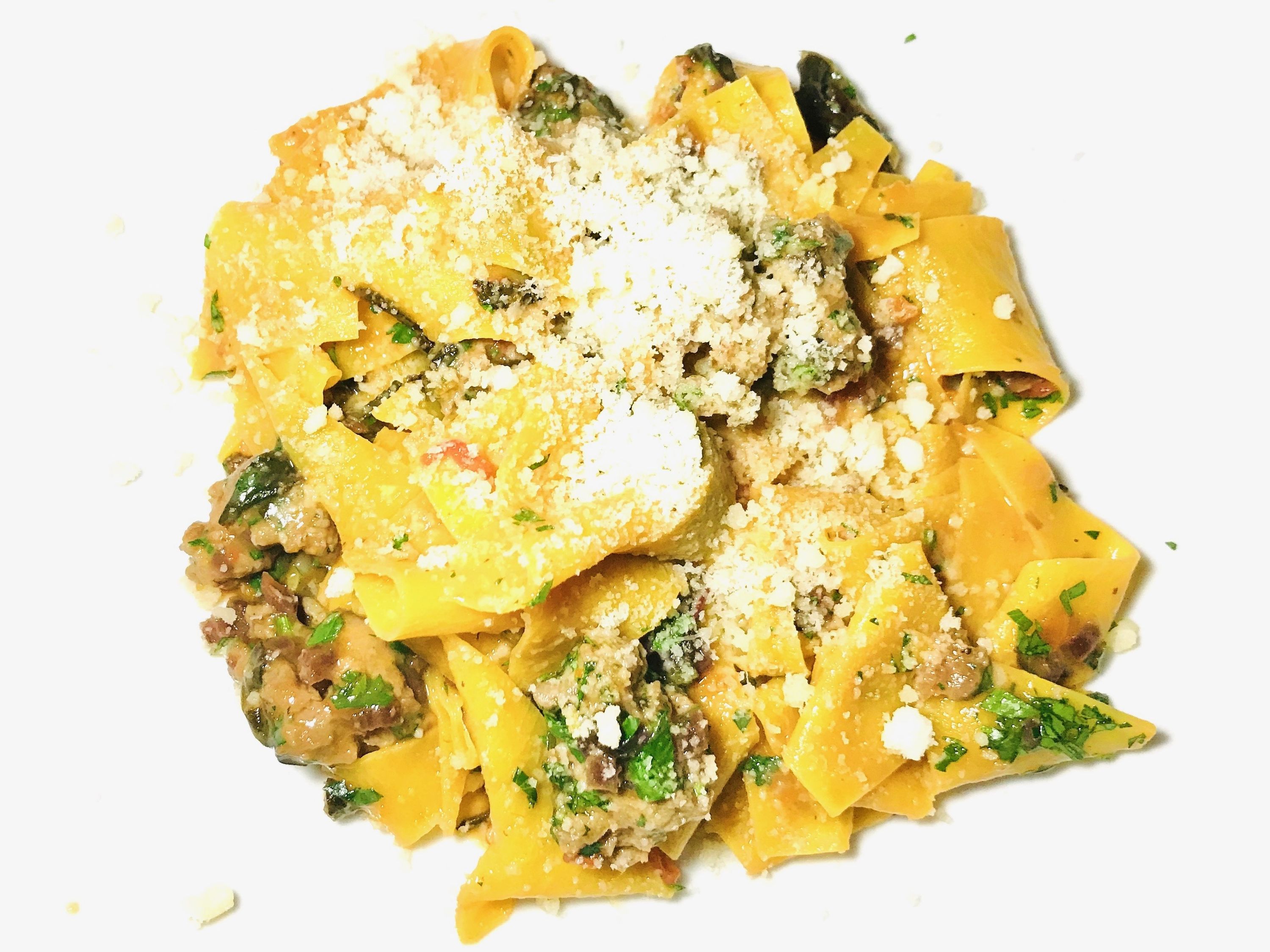Restaurant review: 'Fawn over fresh' in a pasta temple

Credit to Author: Mia Stainsby| Date: Wed, 26 Feb 2020 19:00:25 +0000
Where: 1260 Commercial Dr.
When: Open for dinner, Wednesday to Sunday.
More info: ocapastificio.com
Traffic snarls everywhere foiled our plan to be early birds for dinner at Oca Pastificio. We arrived around 6:30 p.m. Too late! We put our names on a waiting list and cursed the traffic.
Oca Pastificio on a Friday night is pretty much a waiting game.
Thankfully, Commercial Drive is lively into the evening so we bought some groceries and then cooled our heels at Turk’s Coffee Bar nearby until we got the text — table’s ready!
Expectations ran high, given the restaurant’s DNA. Owner/chef Greg Dilabio had worked at one of my favourite restaurants, La Quercia in Kitsilano, for eight years and that restaurant’s chef/owner Adam Pegg is a partner at Oca Pastificio. Dilabio also worked at Kissa Tanto, where he was the pasta guy officiating a marriage of Japanese and Italian cuisine.
When I phoned Dilabio for an interview, he was at La Quercia borrowing kitchen space for his own prep. The partners had both worked at the Slow Food restaurant Osteria Storica Morelli in Trentino, Italy, and on the 50 Top Italy list of best Italian restaurants in the world.
“He’s about the region, he makes pasta to order,” Dilabio says of the chef Fiorenzo Varesco. “That’s how we like to do things, too. I’d always studied pasta but there I refined technique and became comfortable making pasta (dough) during service. I make pasta and rice to order and it can be done if you time things properly.”
Oca Pastificio is a pasta temple. There are some appetizers and antipasti plates but if you avoid gluten, this isn’t the place for you. “I don’t do gluten-free other than risotto. I haven’t figured it out. We’re a pasta restaurant,” he says. He’s partial to pastas of southern Italy.
Greg Dilabio, chef/owner of Oca Pastificio, works the pasta machine.
The pastas are rolled and extruded during service. “I believe there’s nothing better than fresh pasta. There’s a reason why people fawn over fresh,” he says. He rolls sheets of pasta in a tight space between the kitchen and dining room. Some are handcrafted into noodles, others, like tortellini and cappellacci, form into origami shapes in his hands.
All the while, Dilabio is all smiles, heeding social media organizer extraordinaire Marie Kondo and sparking joy. A pasta extruder in the kitchen, meanwhile, squeezes out other forms of pasta like the rigatoni that evening.
He honours tradition but without complete obeisance. “The more you understand history and tradition, the easier it is to bend rules and make it work without confusing people,” he says. “I want to serve what makes me happy and there’s always room for me to keep exploring. It took me a long time to get there with spaghetti.”
Pastas change daily, depending on what he finds at the markets (mostly along Commercial Drive) and the menu is displayed in chalkboards.
We started with an antipasti platter with a five kinds of cured meats, olives, pickles, pickled zucchini and house-made focaccai ($21); some meats were sliced so finely, they were gossamer and sheer. A lovely beginning.
Then a cauliflower sformato with almonds and anchovy ($15), which our server, Antoine Dumont (migrated from La Quercia) described as a less airy souffle. It was more like a flan, nestled in a salad of herbs, cauliflower and almonds. Really lovely.
As for pasta, the lamb and swiss chard maltagliati ($21) intrigued and did not disappoint. More silkiness! The pasta (cut into small squares) was delicate yet had bite.
Antipasti platter, part of the pasta tasting option for the table at $60 per person.
Braised beef rigatoni ($21) wasn’t quite as impressive. Fresh, yes, but the noodles were a little clingy. But the braised beef shin (with veal jus, cream, parsley) created a tasty sauce.
There’s a pasta tasting option for the table ($60 per person) with antipasti, five pastas and dessert. The chalkboard menu is a vocabulary lesson — I learned about puntarelle (chicory-like leaf), maltagliati (pasta shape), sformato (Italian flan) and taralli (pretzel-like cracker) on my visit.
For now, there are two desserts: Almond semi-freddo and orange panna cotta (both $8). The former was presented in two thin flat slices. One thicker slice would have appealed more. The panna cotta, on the other hand, was a beauty with orange segments and candied orange rind, a contrast of delicate and intense flavours. Dilabio says it’s made the traditional way. The original Piedmontese dessert was bound with egg whites instead of the cheater modern method with gelatin.
The wine and beverage is what you might expect — Italian to the core and modestly priced. There’s Prosecco, Peroni beer, Negronis and Amaro, and a short selection of wines that reflects a range of major Italian styles and regions.
When I visited, there were two tables with large groups and the noise level was hard to deal with. “We are a small room and we don’t take reservations, so large groups are very rare, although not impossible,” Dilabio said. “I feel you may have been in on one of those rare occasions.”
CLICK HERE to report a typo.
Is there more to this story? We’d like to hear from you about this or any other stories you think we should know about. Email vantips@postmedia.com.